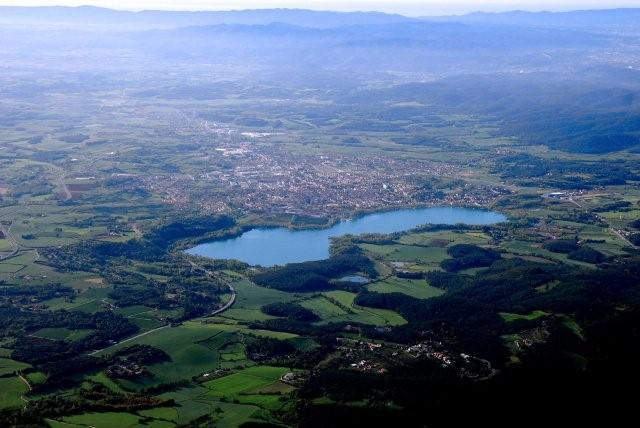| Banyoles - Santa Pau | |
|
|
|
|
1 Day or 1/2 Day |
|
|
Banyoles
Lake In
the Pla de l'Estany region, it is the largest natural lake in Catalonia
and one of the largest ones on the Iberian Peninsula. Add
to travelogue Email to a friend Print friendly version It
has a surface area of 170 hectares and an incalculable depth in some
places. It is the product of a series of karstic and tectonic collapses
and is fed underground from rivers that come down from the Alta Garrotxa. The small ponds that surround it are a result of the same phenomenon, although some of them have strange shapes, such as the one called Can Cisó, which from time to time turns red due to the action of certain bacteria. Excavations carried out around the lake link it to Palaeolithic and Neolithic cultures, which is certified by the exceptional remains of the Neolithic village of La Draga. The
lake is currently a very popular place where the aim is to strike a happy
balance between the need to preserve the medium and that of practising
different activities that respect the surroundings, such as boat trips and
water sports. We should also mention, that Banyoles Lake was a sub
headquarters for the 1992 Barcelona Olympic Games and during 2004, the
headquarters of the World Rowing Championship. Santa
Pau In
the very heart of the Volcanic Area of the Garrotxa there is the Vila
Vella, or old centre, of Santa Pau. Add
to travelogue Email to a friend Print friendly version An
interesting historic site which is built around a square based castle
constructed between the 13th and 14th centuries, and the main square, with
porticoes and an irregular layout, and with arches of different sizes and
with a decidedly mediaeval personality. In the town square there is the
church of Santa Maria, a solid 15th century Gothic building, with a single
nave and a square bell tower. In the southern sector of the town, under the protective shade of the castle, there is a set of houses and narrow streets that lead to the Portal del Mar, from where you can contemplate a wonderful view of the valley of Santa Pau. You
can make the most of a visit to the town to explore nearby valleys,
particularly in the area of the sanctuaries of Mare de Déu dels Arcs and
Santa Margarida de la Cot, from where you can see the volcanic cones of
Can Simó, Puigsubià, Puigmartinyà and Roca Negra, amongst others |
|
